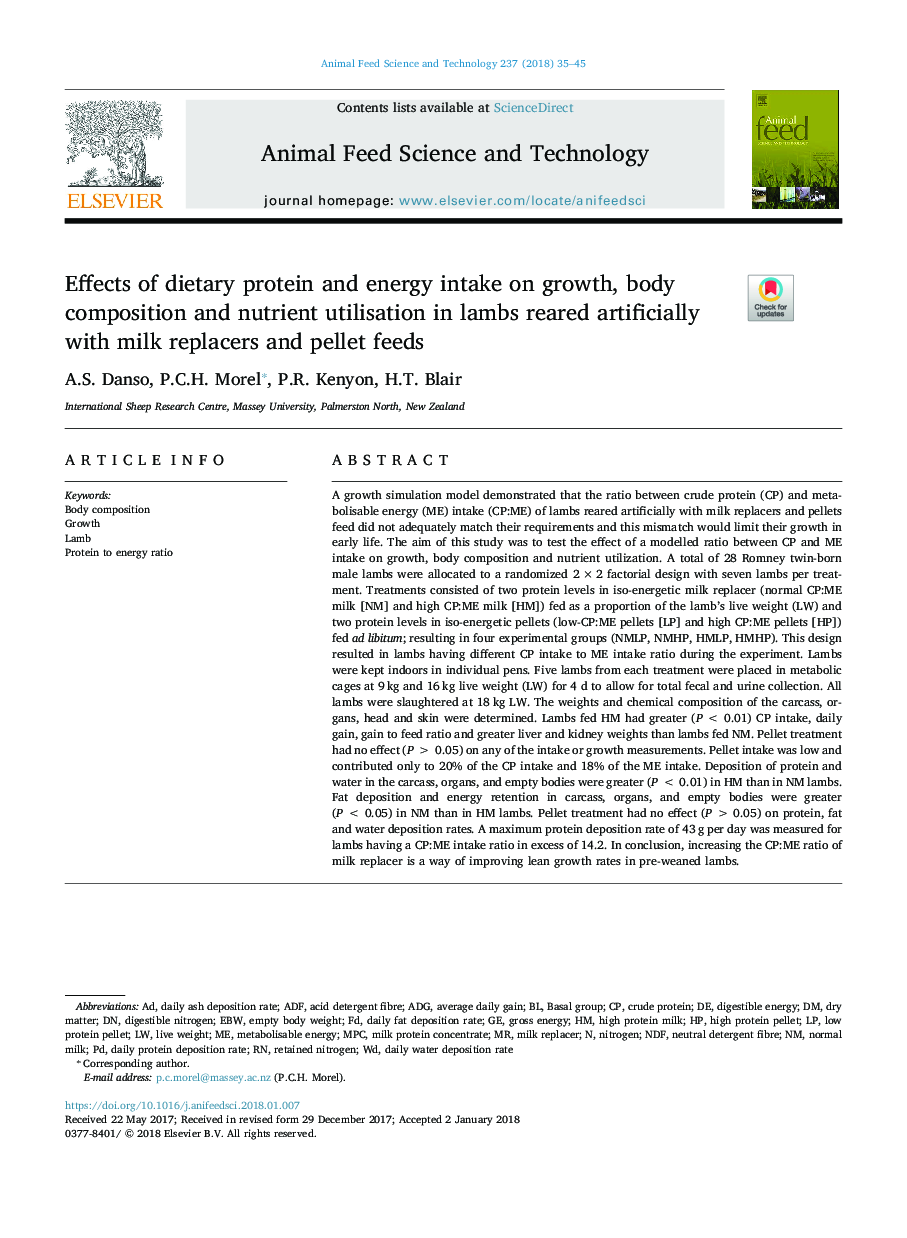| Article ID | Journal | Published Year | Pages | File Type |
|---|---|---|---|---|
| 8491012 | Animal Feed Science and Technology | 2018 | 11 Pages |
Abstract
A growth simulation model demonstrated that the ratio between crude protein (CP) and metabolisable energy (ME) intake (CP:ME) of lambs reared artificially with milk replacers and pellets feed did not adequately match their requirements and this mismatch would limit their growth in early life. The aim of this study was to test the effect of a modelled ratio between CP and ME intake on growth, body composition and nutrient utilization. A total of 28 Romney twin-born male lambs were allocated to a randomized 2â¯Ãâ¯2 factorial design with seven lambs per treatment. Treatments consisted of two protein levels in iso-energetic milk replacer (normal CP:ME milk [NM] and high CP:ME milk [HM]) fed as a proportion of the lamb's live weight (LW) and two protein levels in iso-energetic pellets (low-CP:ME pellets [LP] and high CP:ME pellets [HP]) fed ad libitum; resulting in four experimental groups (NMLP, NMHP, HMLP, HMHP). This design resulted in lambs having different CP intake to ME intake ratio during the experiment. Lambs were kept indoors in individual pens. Five lambs from each treatment were placed in metabolic cages at 9â¯kg and 16â¯kg live weight (LW) for 4 d to allow for total fecal and urine collection. All lambs were slaughtered at 18â¯kg LW. The weights and chemical composition of the carcass, organs, head and skin were determined. Lambs fed HM had greater (Pâ¯<â¯0.01) CP intake, daily gain, gain to feed ratio and greater liver and kidney weights than lambs fed NM. Pellet treatment had no effect (Pâ¯>â¯0.05) on any of the intake or growth measurements. Pellet intake was low and contributed only to 20% of the CP intake and 18% of the ME intake. Deposition of protein and water in the carcass, organs, and empty bodies were greater (Pâ¯<â¯0.01) in HM than in NM lambs. Fat deposition and energy retention in carcass, organs, and empty bodies were greater (Pâ¯<â¯0.05) in NM than in HM lambs. Pellet treatment had no effect (Pâ¯>â¯0.05) on protein, fat and water deposition rates. A maximum protein deposition rate of 43â¯g per day was measured for lambs having a CP:ME intake ratio in excess of 14.2. In conclusion, increasing the CP:ME ratio of milk replacer is a way of improving lean growth rates in pre-weaned lambs.
Keywords
Related Topics
Life Sciences
Agricultural and Biological Sciences
Animal Science and Zoology
Authors
A.S. Danso, P.C.H. Morel, P.R. Kenyon, H.T. Blair,
